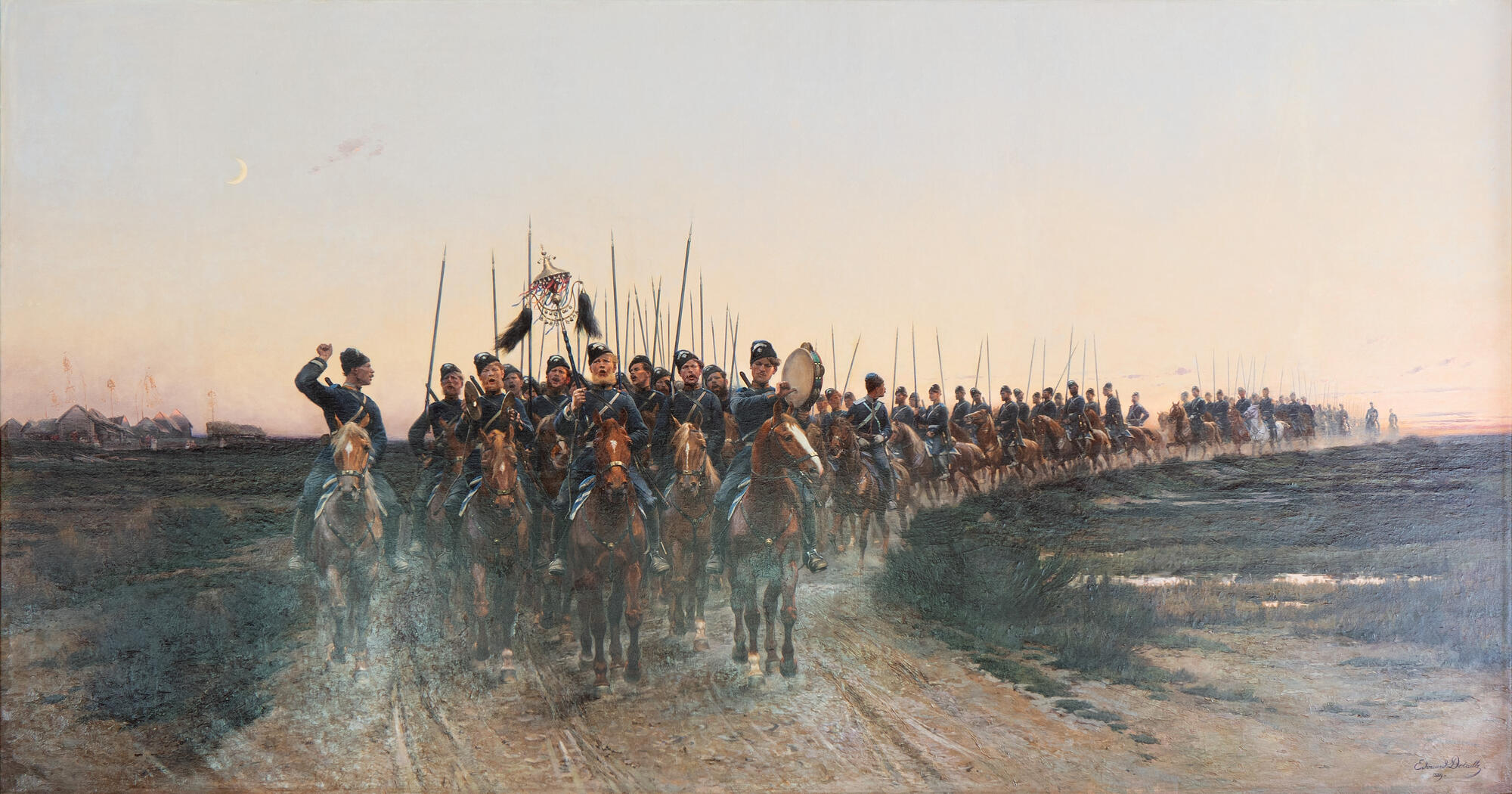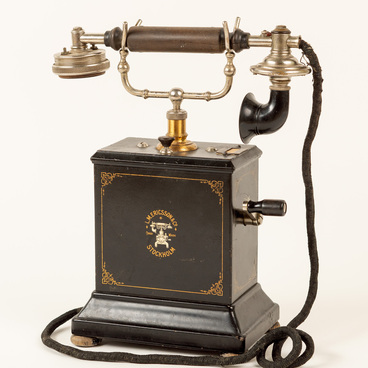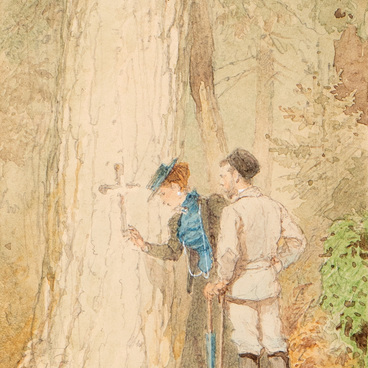The painting “Cossacks of the Life-Guards Ataman Regiment” was originally kept in the Winter Palace in St. Petersburg. When the imperial couple (Nicholas II and Alexandra Feodorovna) settled at Tsarskoe Selo, this large-scale painting appeared in the empress’ Corner Drawing Room in the Alexander Palace.
The canvas was painted by Jean Baptiste Édouard Detaille, a French academic painter and combat artist, Commander of the Legion of Honor who became known for his incredibly realistic works devoted to military themes. Among his works are portraits of soldiers, depictions of military maneuvers, battles, and everyday scenes of army life. The artist was particularly interested in the era of the Napoleonic Wars.
Paintings by Detaille are distinguished by a great accuracy in depicting details.
Since 1879, the artist, who had already been known far beyond his homeland, worked in various countries, including the Russian Empire. In 1888–1889, Detaille visited St. Petersburg, where he created a number of battle paintings on commission from the Russian Imperial Court. Nicholas II highly appreciated the master’s works: his paintings were used to decorate the Emperor’s Working Study and State Study in the Alexander Palace.
The artist depicts the Cossacks of the Life-Guards Ataman Regiment returning at sunset to the barracks in a village near Krasnoe Selo, where in the summertime military camps were set up and maneuvers of the Guards regiments were held. Tired horses move at a slow pace after the exercises, and the riders sing traditional regimental songs. To achieve convincing accuracy in conveying the characteristic details of the landscape and the peculiarities of lighting, Jean-Baptiste Detaille spent long hours in the plein air. It was the work in natural light that helped create expressive nature sketches, which later served as the basis for a large painting.
In “Cossacks of the Life-Guards Ataman Regiment”, the artist masterfully conveyed the evening scenery during the white nights of St. Petersburg, when the light, breaking through the haze of mist, illuminates the horses and riders.
The canvas was painted by Jean Baptiste Édouard Detaille, a French academic painter and combat artist, Commander of the Legion of Honor who became known for his incredibly realistic works devoted to military themes. Among his works are portraits of soldiers, depictions of military maneuvers, battles, and everyday scenes of army life. The artist was particularly interested in the era of the Napoleonic Wars.
Paintings by Detaille are distinguished by a great accuracy in depicting details.
Since 1879, the artist, who had already been known far beyond his homeland, worked in various countries, including the Russian Empire. In 1888–1889, Detaille visited St. Petersburg, where he created a number of battle paintings on commission from the Russian Imperial Court. Nicholas II highly appreciated the master’s works: his paintings were used to decorate the Emperor’s Working Study and State Study in the Alexander Palace.
The artist depicts the Cossacks of the Life-Guards Ataman Regiment returning at sunset to the barracks in a village near Krasnoe Selo, where in the summertime military camps were set up and maneuvers of the Guards regiments were held. Tired horses move at a slow pace after the exercises, and the riders sing traditional regimental songs. To achieve convincing accuracy in conveying the characteristic details of the landscape and the peculiarities of lighting, Jean-Baptiste Detaille spent long hours in the plein air. It was the work in natural light that helped create expressive nature sketches, which later served as the basis for a large painting.
In “Cossacks of the Life-Guards Ataman Regiment”, the artist masterfully conveyed the evening scenery during the white nights of St. Petersburg, when the light, breaking through the haze of mist, illuminates the horses and riders.



